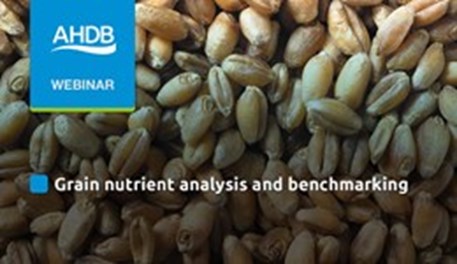P-owered up for RB209
Monday, 23 September 2019
The 2020 revision of the AHDB Nutrient management guide (RB209) will feature the first major changes to phosphorus (P) guidance in nearly four decades.
Since 2009, AHDB has invested in a broad range of research activities to improve recommendations for this major nutrient. The pressure to reduce the amount of P that works its way to water bodies, as well as general concerns about the sustainability of P mining, means a healthy amount of public funds has helped to bolster this investment.
P philosophy is to ‘feed the soil’ to keep it at the target index – Index 2. P is applied to top up levels, in particular to replace the P removed in grain and straw. However, with about 80% of UK arable land estimated to be at or above Index 2, many strategies use ‘P holidays’ to run levels down.
Whether Index 2 is appropriate for all situations has been the subject of great debate. However, research has now confirmed that Index 2 continues to be appropriate for most soils. Crops grown in soils at lower indices, especially at Index 0, fail to use most of the P applied during the same year. Indeed, research shows crop recovery associated with commonly used fertilisers is extremely poor – range 0 to 8% (4% average) – and most of the unrecovered P (>90%) ends up in the soil reserves.
Over the years, several products to help improve crop P recovery have arrived on the market. These products use a variety of approaches – placement, foliar application, seed treatment and water-insoluble sources (e.g. struvite) – but, in AHDB-funded trials, none showed the reliable and convincing benefits required for a ‘feed the crop’ strategy to be adopted within RB209.
Although, Index 2 is still the target index, the 2020 edition sees a change in how this target is hit. Fertiliser maintenance recommendations now better reflect the commercial yields of
modern cereals crops and take into account new evidence on the amount of P taken off in crop materials.
The biggest shake-up is to wheat guidance, due to the significant amount of quality information available for this crop. Currently, RB209 states that 7.8 kg phosphate (P2O5) per tonne is removed in the harvested grain. However, compelling evidence means this offtake value will reduce to 6.5 kg P2O5/t.
"The core of the P recommendations for cereals will stay the same, with applications usually made to maintain soils at Index 2. However, grain offtake information has been improved and some maintenance rates will change, due to fine-tuning of standard yields"
Sajjad Awan, AHDB
Grain nutrient analysis
In addition to improvements in RB209’s default offtake values, the manual will now encourage the analysis of grain samples for specific nutrients, including P. Nutrient levels in grains can provide valuable clues about how efficiently crops are taking them up. The critical level of P in winter wheat grain has now been established – 0.32% dry matter. Grain with levels lower than this value come from a P-deficient crop. Interestingly, a quarter of UK cereal crops could be under this critical value, according to recent estimates.
The amount of P removed by a crop can be established rapidly from laboratory results. On Index 2 land, if the offtake value is lower than the maintenance value, it reveals that the crop was not able to make the most of the P applied. In such circumstances, the application of additional P is unlikely to correct the deficiency.
Detective work will be required to pinpoint the exact cause or causes for the lack of P uptake. Unfortunately, crop uptake is complex and influenced by many factors. Soil temperature, soil pH, soil compaction, soil water content, crop damage (e.g. caused by herbicides, pests and disease) and low light levels all play a significant role in uptake. Only once the constraint has been identified can management solutions be determined.
Regular analysis of soil has long been an essential part of nutrient management, helping to ensure soil P levels are maintained. Grain P analysis can now be added to the toolbox, as part of efforts to help crops make the most of P.
How to carry out, analyse and use the results of grain analysis.
UK partnership for crop nutrition
The AHDB Nutrient management guide (RB209) is updated in partnership with a number of organisations. To access the guide or for more information on the partnership, visit ahdb.org.uk/rb209
At-a-glance changes for P
- Emphasis on soil and grain sampling to help fine-tune nutrient management
- New protocol on how to sample grain for nutrients and interpret results
- Changes to wheat grain offtake values
- Recommendation tables changed to reflect new offtake values and aligned standard yields – for phosphorus, as well as for nitrogen and potassium
This article appeared in Grain Outlook, autumn/winter 2019
.JPG)
Roger Sylvester-Bradley (ADAS) outlined the latest phosphorus developments for the 2020 edition of RB209 at the AHDB Agronomists’ Conference (2 December 2019).
Video

Grain nutrient analysis and benchmarking
Measurements of grain P could help you fine-tune nutrient management



